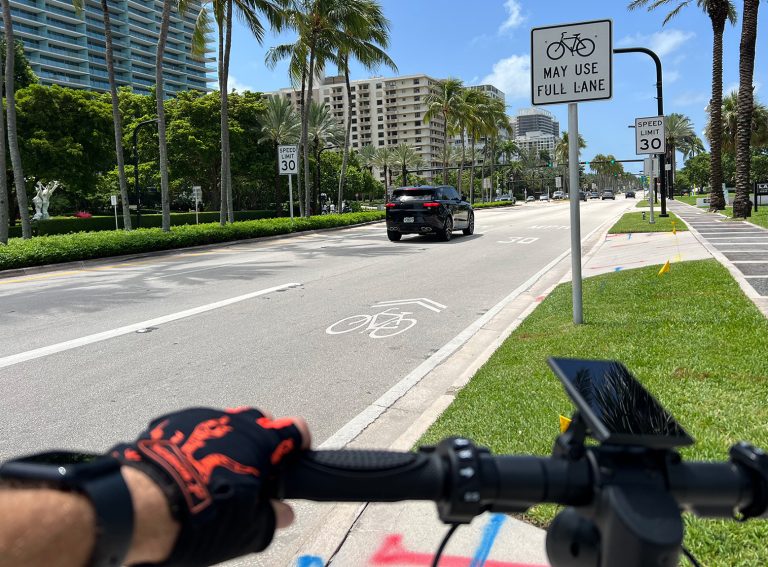Author: Jean Andrews, Policy Director (Ireland and UK) at Superpedestrian
Ireland, like many countries today, is now taking great strides on climate action – and micromobility could be a powerful tool in the transition to a low carbon society.
The Climate Bill making its way through the Oireachtas (Irish parliament) will enshrine in legislation a target for net zero by 2050, with an ambitious interim target of a 51 per cent reduction in emissions by 2030. Delivery will be driven through a series of carbon budgets across all sectors of the economy.
Having spent a career in climate action policy, I’m proud to support the proposed pioneering climate legislation that will lead the country to a brighter tomorrow. However, now that the policy is going in the right direction, it’s time to face the much tougher challenge of taking action to meet the targets.
The transport challenge
Of all the carbon-emitting activities in which we partake, transportation has one of the steepest climbs ahead of it. This sector alone is responsible for some 20 per cent of all carbon emissions in Ireland, with private cars being the largest contributors.
I use my bike to travel across Dublin with my family, a habit developed in my years living in London and Amsterdam, but bikes aren’t practical for everyone. This is where micromobility can lend a helping hand. This emerging segment includes electric scooters and electric bikes, as well as other small, electrified vehicles that are less common or not yet invented. How important could micromobility become to Ireland?
In Dublin, 30 per cent of car journeys in 2019 were 2km or less according to the Central Statistics Office National Travel Survey, with the figure rising to more than 55 per cent under 2km nationwide. Some 6.6m tonnes of carbon were created by cars alone in 2018. Our data shows that around 30 per cent of all e-scooter rides avoid a car journey, so e-scooters could have a significant role to play in cutting carbon emissions. We would also enjoy cleaner air, less congestion and better links to public transport networks.
However, micromobility can only fulfil its potential if it’s done right. Here are three key points Irish regulators need to consider as they work towards legalising electric scooters:
1. Environmental impact starts with the vehicle. Although micromobility companies often talk about vehicle design, one recent report indicates that many shared scooters still often last only a few short months. (NB This study did not include our own vehicle, which would have skewed the results significantly upwards.) Vehicles are removed from service due to electronics issues, vandalism, theft, or simply the toll of public service. Short vehicle lifetimes are problematic because new vehicles must be manufactured to nearly-new vehicles. Lifecycle assessments show that vehicle manufacturing, and battery manufacturing in particular, is responsible for the lion’s share of carbon emissions associated with micromoblity.
Therefore, when procuring e-scooter fleets, cities and regulators have the ability to dig deep into vehicles, demand proof of longevity, and carry out side-by-side comparisons to differentiate between the genuine and the gimmick. Until authorities begin demanding a higher level of vehicle quality from their e-scooter suppliers, environmental impact will remain a hurdle for this sector.
2. Our towns must not be forgotten. Historically, public transportation spending has been unfairly distributed between big cities and small towns. Dublin, for example, gets the lion’s share of well-served bus routes, as well as the Dart and Luas; while many of our towns have notably poor public transport links. Often, the people who are in most need of public transport are the ones least able to access it. Micromobility has the power to integrate seamlessly into villages and towns, bolstering beleaguered bus networks and improving connectivity and economic growth. That will only happen when micromobility operators demonstrate real zeal for serving smaller communities, rather than focussing on the investor-pleasing large metropolises.
3. Big decisions need big data. Sharedmicromobility vehicles, bristling with sensors and internet-of-things capabilities, can already be used to provide a clear (anonymised) picture of popular city routes. Micromobility companies have the ability to go beyond the basics of data sharing (some more so than others), but they are often reluctant to do so.
There is a real opportunity here for Ireland. With the right technology, for example, shared fleets can combine vehicle data and AI to pinpoint poor road surfaces and pinch points in infrastructure, and identify precisely where and when intoxicated riding or aggressive behavior takes place – and all in near real time.
These sorts of insights improve our understanding of human behaviour and help us design better living spaces. Irish towns and cities stand to benefit from the wealth of data that could be on offer – and local authorities should demand nothing less.
What’s coming next for Ireland?
It’s about to become “open season” for shared micromobility in Ireland. With a multitude of e-scooter companies trying to get a foot in the door with a handful of councils, local authorities should beware of outlandish promises of investment or technologies that don’t exist.
However, there are real benefits on offer for Irish people. Done right – with a high bar for quality and compliance, and involving multiple operators to drive competition – shared micromobility has the potential to offer a more accessible and more sustainable transport horizon for Irish communities. To realise this vision, city regulators must choose only the best.








